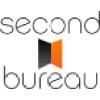Abstract:
Navigating EU regulations in grid computing presents significant challenges for startups, especially as they strive to balance innovation with compliance. Central to this are key laws such as the GDPR, ePrivacy Directive, and NIS Directive, which not only mandate compliance but also emphasize the protection of data, user privacy, and cybersecurity. Understanding these regulations is crucial for startups to manage data effectively while fostering innovation. Key strategies include implementing strong authentication measures, encrypting data, and conducting regular security audits. Tools like AES-256 encryption and VPNs, along with techniques like pseudonymization, help ensure compliance while maintaining data utility. Successful examples, such as France's iExec and Poland's Golem Network, demonstrate how integrating blockchain and privacy mechanisms can align operations with EU standards. These startups underscore the importance of innovative approaches to compliance, which can serve as a catalyst for growth. The article emphasizes that by embracing these regulations and adopting robust security practices, startups can build trust and drive innovation, turning regulatory challenges into opportunities for advancement.
Navigating EU regulations in grid computing can be challenging, particularly for startups striving to balance innovation with compliance. If you're dealing with data protection, privacy, and cybersecurity challenges, you're not alone. Key laws like the GDPR, ePrivacy Directive, and NIS Directive are crucial to understand. These aren't just rules to follow—they're about keeping your data safe, protecting your users, and ensuring your business can grow. Let's explore these important regulations and how they influence strategies in grid computing, with a focus on industries like SaaS, fintech, AI/ML, and healthtech.
Navigating EU Compliance in Grid Computing: Key Regulations and Their Impact
Key EU Data Protection Laws
In the EU, the General Data Protection Regulation (GDPR) plays a significant role in shaping how startups handle data, particularly in sectors like SaaS and fintech. The GDPR is about more than compliance—it's about respecting people's data rights and ensuring businesses protect their information. During my time managing a team in Beijing, I encountered significant challenges related to data rules, which underscored the importance of understanding GDPR for startups in grid computing.
The ePrivacy Directive is another vital regulation, focusing on electronic communications privacy. It ensures that data sent across grid networks is secure and private, addressing issues like cookie consent and data traffic. This directive is crucial for industries like AI/ML and healthtech, where secure data transmission is paramount.
While GDPR covers personal data broadly, the ePrivacy Directive zeroes in on electronic communication specifics. This combination is essential for grid computing, where data travels through many systems. Together, these laws create a robust framework for privacy and ethical data handling.
Adding to this security is the NIS Directive, which enhances cybersecurity measures. It sets strict security rules for critical service operators, including those in grid computing. This directive is key to defending against cyber threats that could harm grid systems.
The Cybersecurity Act introduces a certification framework to ensure high security standards for ICT products, helping organizations adopt better security practices in their grid computing activities.
The Data Governance Act focuses on secure data sharing, crucial for the cross-border nature of grid computing. It encourages safe data exchanges, allowing networks to operate efficiently without compromising security.
Understanding these regulations is crucial for startups in grid computing. By following them, businesses can manage data effectively, ensuring compliance while optimizing for innovation.
Strategies for Ensuring Compliance in Grid Computing
Startups face challenges in navigating grid computing regulations. However, with the right strategies, aligning with EU rules becomes achievable. Let's explore best practices for securing your grid environment and the tools that can help.
Best Practices for Data Security and Privacy
Implementing Strong Authentication and AuthorizationSecuring access in distributed networks is crucial. Authentication and authorization serve as the first line of defense against unauthorized access. Implementing protocols like multi-factor authentication (MFA) and role-based access control (RBAC) ensures that only verified users can access sensitive data.
- Multi-Factor Authentication (MFA): Adds an extra security layer, requiring more than just a password.
- Role-Based Access Control (RBAC): Limits data access to necessary users, reducing exposure.
- Biometric Verification: Utilizes physical traits, like fingerprints, for heightened security.
Encryption acts as a safety net for data at rest or in transit. Robust encryption methods ensure data remains secure, even if intercepted. In my experience with data-driven projects, encryption's importance is clear.
- AES-256 Encryption: Secures stored data with minimal performance impact.
- TLS (Transport Layer Security): Protects data in motion, especially in multi-node communications.
- Hardware Security Modules (HSMs): Securely manage encryption keys.
Regular audits serve as compliance checks, identifying vulnerabilities before they become issues. In investments, regular evaluations are crucial—just like security audits in grid computing.
- Vulnerability Assessments: Find and fix weaknesses proactively.
- Intrusion Detection Systems (IDS): Monitor for suspicious network activity.
- Continuous Monitoring: Provides real-time network insights for ongoing security.
Tools and Technologies for Compliance
Leveraging Advanced Encryption TechnologiesEncryption tools like AES-256 and RSA protect data integrity, serving as the backbone of trust in grid computing.
- AES-256: Known for strong encryption, ideal for data protection.
- RSA Encryption: Secures data transmission.
- Elliptic Curve Cryptography (ECC): Offers strong security with smaller keys, suitable for resource-constrained settings.
Balancing data utility with privacy is challenging. Techniques like pseudonymization help maintain privacy while maximizing data utility.
- Pseudonymization: Replaces real identifiers to safeguard privacy.
- Data Masking: Conceals sensitive info from unauthorized users.
- K-anonymity: Prevents individual identification in datasets.
For secure data travel across networks, VPNs and SSL/TLS are essential. They protect against interception and maintain confidentiality.
- VPNs (Virtual Private Networks): Encrypt data traveling between nodes.
- SSL/TLS Protocols: Secure network connections.
- IPsec (Internet Protocol Security): Secures IP communications by encrypting each packet.
These strategies and tools help startups navigate compliance, ensuring innovation isn't sacrificed for security.
Case Studies of Compliance in Action
Successful Startup Examples
- iExec (France): Uses blockchain to ensure data protection and privacy, integrating GDPR seamlessly. Their decentralized infrastructure enhances security and transparency, aligning with GDPR.
- Golem Network (Poland): Excels at privacy preservation, complying with EU standards by using advanced privacy mechanisms. Their focus on transparency and user consent aligns with GDPR.
- GridSingularity (Austria): Focuses on energy data exchanges, using blockchain to meet GDPR requirements. Their approach supports secure cross-border data exchanges.
Lessons Learned
Handling GDPR is challenging, especially for grid computing startups. However, innovation often arises from such challenges. Startups like iExec use inventive solutions, like blockchain, to handle data securely.
Cross-border data transfers add complexity. Strategic data localization can help manage these challenges. Keeping data within specific regions aligns with local laws, reducing risks.
Staying ahead of regulatory changes requires active collaboration with regulatory bodies. This proactive approach ensures startups aren't caught off guard by sudden changes.
Balancing Innovation with Regulatory Obligations
Innovation in grid computing means navigating regulatory landscapes effectively. Startups can introduce new technologies without compliance issues by aligning regulations with growth.
Innovative Strategies for Compliance
Creating compliance frameworks that integrate with innovative processes ensures startups meet regulations while supporting growth. From my experience, building compliance into innovation is crucial.
Industry associations offer insights into evolving regulations. Being connected helps startups stay informed and advocate for smoother regulatory navigation.
Investing in employee education is also strategic. A knowledgeable team is key to tackling compliance challenges effectively.
- Workshops and Seminars: Enhance knowledge interactively.
- Online Courses: Offer flexible, tailored learning.
- Real-time Updates: Keep teams informed of compliance changes.
Future Trends and Compliance Implications
GDPR remains a significant influence on data privacy, shaping future frameworks. Sustainability is also impacting compliance, pushing for energy-efficient practices. Decentralization and edge computing trends support efficiency and security goals, aligning well with compliance demands.
Startups must stay adaptable, adjusting strategies to regulatory shifts. By embracing flexibility, they can thrive, using regulations as stepping stones to innovation.
Navigating EU regulations in grid computing is a challenge worth tackling. Embracing laws like GDPR and the ePrivacy Directive isn't just about compliance—it's about protecting data and building trust. By implementing strong security practices, startups can innovate while staying secure. Learning from successful examples shows that compliance can drive growth. Consider how these frameworks can empower your strategies.














